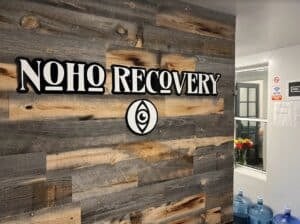
Seven Hills Behavioral Health Hospital
Henderson , NV

The Nestled Recovery Center
Las Vegas , NV


Newport Institute for Young Adults
Sunol , CA

San Jose Behavioral Health Hospital
San Jose , CA

Moonlight Mountain Recovery – Nampa
Nampa , ID

The Camp Recovery Center
Scotts Valley , CA

Addiction Treatment In Nevada
Crystal methamphetamine from Mexico, is the biggest drug threat that plagues Nevada’s communities. Marijuana, black tar heroin and opioid-based painkillers also pose a major concern for Nevadans.
In 2020, approximately 832 people died from a drug overdose in Nevada. Over half of those deaths occurred in Las Vegas.
Rehab admissions for addiction in Nevada have primarily involved the following substances:
- Methamphetamine, particularly crystal meth
- Marijuana
- Heroin
- Opiates, including prescription drugs
- Cocaine
While the Silver State draws millions of tourists every year, it’s also a major pit stop for a number of drug trafficking organizations (DTOs). Nevada serves as a central distribution point for drugs trafficked into the state from Mexico. Drug traffickers use the large volume of tourists to conceal their transportation and distribution efforts. Because of its close proximity to California and the southwest border, drugs are usually transported through Nevada before making their way towards the central and eastern regions of the nation. Black tar heroin, methamphetamine, marijuana and cocaine are among the most common substances smuggled into Nevada via private vehicles and commercial trucks.
Substance abuse among Nevada’s teen population is another rapidly growing issue. In 2009, Nevada teens accounted for 3.6 percent of total primary rehab admission in the state. The national average was just 0.5 percent. Marijuana, painkiller and other illicit drug use was highest among teens than any other age group in Nevada. State officials believe the spike in teen substance abuse is caused by DTOs targeting distribution efforts at high schools in the recent decade.
Although fatal overdose rates have hit an all-time high for Nevada residents, more people than ever are getting treatment. No matter the type of addiction, Nevada’s treatment centers are prepared to give you the help you deserve. Call a treatment provider today to discuss available treatment options.

Break free from addiction.
You have options. Talk about them with a treatment provider today.
Laws Of Nevada Drug Use
In an effort to negate drug-related crime, Nevada’s judicial court enforces a strict penal system for those caught possessing or selling illegal drugs. Violators can expect the maximum penalty for their crime to include jail time, fines or a combination of both.
Selling drugs are considered a far more serious crime than possessing drugs in Nevada. Penalties for the sale of drugs can nearly double those for possession alone.
Controlled dangerous substances (CDS) in Nevada are divided into five subcategories, according to their perceived risk of developing an addiction.
- Schedule I drugs are considered to have the highest potential danger and risk of dependence. Heroin is included in this group.
- Schedule II drugs have the second-highest risk for addiction, as well as the second-highest perception of danger. Hydrocodone, morphine and several types of opiates are just a few examples of Schedule II drugs.
- Schedule III drugs include a number of anabolic steroids, like testosterone and oxymetholone.
- Schedule IV drugs are typically benzodiazepines like alprazolam (Xanax).
- Schedule V drugs have the lowest perceived risk of dependency and include some antidepressants and anticonvulsants, like lacosamide.
Most of the substances in schedules I through II have little to no practical medical use, while schedules III through V increase in accepted medical value. However, it should be noted that possessing or selling any of the drugs noted above without a valid prescription – no matter which schedule they fall under – is considered a major crime.
| CDS classification | Type of offense | Maximum penalty |
|---|---|---|
| Possession | ||
| Schedules I, II, III and IV | First or second offense | Fine up to $5,000 and/or 1 year of incarceration |
| Third or subsequent offense | Fine up to $20,000 and/or 5 years of incarceration | |
| Schedule V | First or second offense | Fine up to $5,000 and/or 1 year of incarceration |
| Third or subsequent offense | Fine up to $5,000 and/or 5 years incarceration | |
| Sale | ||
| Schedules I and II | First offense | Fine up to $5,000 and/or 4 years incarceration |
| Second offense | Fine up to $10,000 and/or 5 years or incarceration | |
| Third or subsequent offense | Fine up to $60,000 and/or 15 years of incarceration | |
| Schedules III, IV and V | First or second offense | Fine up to $10,000 and/or 4 years incarceration |
| Third or subsequent offense | Fine up to $10,000 and/or 5 years incarceration | |
Marijuana Laws In Nevada
Although Marijuana is classified as a schedule I drug in Nevada, charges for possession and selling are handled separately.
Possession of less than one ounce of marijuana for personal use is considered a misdemeanor for the first three offenses. Violators who commit this crime face a maximum $2,000 fine and up to 365 days in jail. The fourth offense is classified as a felony, with a potential $5,000 fine and four-year prison sentence.
Nevada enforces a mandatory minimum sentence policy for possessing and selling marijuana. No matter how much of the substance is involved in the crime, violators will go to jail for at least a year.
Possessing marijuana with the intent to sell is automatically considered a felony in Nevada. Being caught with selling any amount less than 100 pounds results in up to 15 years in prison and a maximum fine of $20,000. However, if you’re caught selling over 10,000 pounds or if you sell any amount to a minor, you could end up in jail for life.
Despite stone-cold penalties for the recreational use of marijuana, Nevada has fully operational medical marijuana laws. Medical marijuana was legalized in 2001, allowing Nevada residents to seek relief for the following conditions:
- HIV/AIDS
- Cachexia
- Cancer
- Glaucoma
- Post-traumatic stress disorder
- Persistent muscle spasms or seizures
- Severe nausea or pain
- Other conditions, as subject to approval by a primary care physician
Medical marijuana patients have a limit on how much of the drug they can possess at one time – two and one-half ounces to be precise. Other marijuana-infused products, as well as edible products are permitted under the same limit. Patients can cultivate up to twelve mature plants, but certain restrictions may apply if the patient resides within 25 miles of a dispensary.
Addiction Treatment Laws In Nevada
Legislators believe that tackling Nevada’s escalating drug addiction rates involves a multifaceted approach. This is why the state has adopted several measures to help alleviate the state’s drug issues, including syringe access laws, drug trafficking control and prescription monitoring programs.
Nevada’s Prescription Monitoring Program (NV PMP)
Prescription monitoring programs have helped many states reduce instances of drug abuse. These programs work by monitoring the type and amount of medications prescribed by doctors and pharmacists to patients.
Nevada’s prescription monitoring program, NV PMP, was established in 1997 to monitor schedule II, III and IV drugs dispensed in the state. Information about any new medications prescribed is reported daily to the state of Nevada. Pharmacies are required to submit all dispensed medications to the program’s data repository no later than by the end of the next business day.
By using a prescription monitoring program, states are able to detect the early warning signs of drug abuse. They’re also able to prevent instances of doctor shopping (people who go from doctor to doctor to obtain more drugs). In addition, monitoring the type and amount of drugs prescribed can help curb the amount of drugs that flow into the illegal drug market.
Syringe Access Bill (SB 410)
Taking drugs through injection methods can come with a high risk of infection and disease, especially when the needles are shared. Providing community access to clean syringes is proven to significantly reduce the transmission of infectious diseases through drug use.
In 2013, Nevada enacted a syringe access law that would remove syringes from the state’s list of illegal drug paraphernalia. This law not only made the sale of non-prescriptive syringes legal in the state but also created several Syringe Service Programs (SSPs). Northern Nevada HOPES is just one of many healthcare providers in the state that established an SSP in response to the law.
Some people fear that allowing access to syringes would make drug abuse an even bigger issue. However, having these programs in place could encourage more people to enter rehab. Nevada legislators hope that healthcare professionals who work at the centers will develop relationships with visitors, thereby helping them get the treatment they need.
Nevada High Intensity Drug Trafficking Area Program
To combat the harmful effects that DTOs have on communities across the nation, the United States has a number of designated High Intensity Drug Trafficking Areas (HIDTA) that monitor the issue. Most HIDTAs include multiple states in various regions of the U.S., but Nevada participates in its own program.
Because Nevada’s drug trafficking issues are so problematic, the state has its own specialized resources for identifying and stopping DTOs in their tracks. The Nevada HIDTA is made up of 16 individual task forces, as well as a training initiative that provides over 20,000 hours of training to Nevada law enforcement every year. Twelve of those task forces are centralized in Clark and Washoe counties — two of Nevada’s most affected areas.
Nevada’s HIDTA program has been extremely effective in eradicating DTO distribution efforts. In November 2010, task forces seized 17 pounds of methamphetamine in Clark County. In another single event, Nevada’s highway patrol uncovered 19 pounds of methamphetamine in transit to Reno, Nevada.
Treatment Centers In Nevada
Many people in Nevada are turning their lives around every day by going to rehab. In 2010, approximately 5,000 Nevadans sought treatment for their substance abuse.
There is absolutely no shame in admitting you need help with an addiction. There are people who care about you and want to see you get better.
Desert Hope treatment center is just one of the many rehabs in Nevada equipped to help people overcome their substance abuse disorders. The center uses an individualized treatment approach to ensure every patient has the best chances of a successful recovery.
Patients participate in a number of therapies and treatment, which can include:
- Individual and group therapy
- Family therapy
- Artistic expression therapy
- Aftercare recovery groups and skills building
With all of the rehab options to choose from, it’s important to focus on looking for centers that offer your desired treatment– not just the cheapest or most convenient center to home. Not all treatment centers offer the same services, which is why many choose to travel to another state, or even another part of the country, for the specific care they desire.
Traveling for rehab has shown to be highly effective in helping people stay sober after treatment. It’s also a great choice for those looking to get away from the temptations that contributed to their addiction. Being in a new environment gives people the “fresh start” mindset they need to focus on rebuilding a healthy, new life.
Contact a treatment provider to discuss available treatment options.
Published:
Author
Jeffrey Juergens

-
Jeffrey Juergens earned his Bachelor’s and Juris Doctor from the University of Florida. Jeffrey’s desire to help others led him to focus on economic and social development and policy making. After graduation, he decided to pursue his passion of writing and editing. Jeffrey’s mission is to educate and inform the public on addiction issues and help those in need of treatment find the best option for them.
- More from Jeffrey Juergens
- Alabama
- Alaska
- Arizona
- Arkansas
- California
- Colorado
- Connecticut
- Delaware
- Florida
- Georgia
- Hawaii
- Idaho
- Illinois
- Indiana
- Iowa
- Kansas
- Kentucky
- Louisiana
- Maine
- Maryland
- Massachusetts
- Michigan
- Minnesota
- Mississippi
- Missouri
- Montana
- Nebraska
- Nevada
- New Hampshire
- New Jersey
- New Mexico
- New York
- North Carolina
- North Dakota
- Ohio
- Oklahoma
- Oregon
- Pennsylvania
- Rhode Island
- South Carolina
- South Dakota
- Tennessee
- Texas
- Utah
- Vermont
- Virginia
- Washington
- West Virginia
- Wisconsin
- Wyoming
- Guam
- Puerto Rico
- US Pacific Islands
- US Virgin Islands
- Washington D.C.
- American Samoa
Sources
Feature your center
Ready to connect with treatment seekers across the country? Enter your information to learn about our advertising options and get in contact with our development team.



